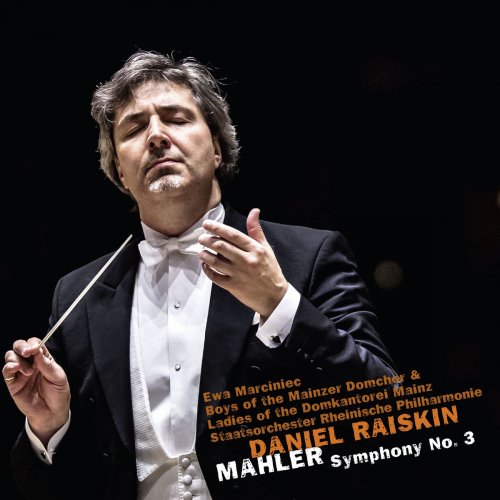Daniel Raiskin, Staatsorchester Rheinische Philharmonie - Mahler: Symphony No. 3 (2015) [Hi-Res]

Artist: Daniel Raiskin, Staatsorchester Rheinische Philharmonie, Ewa Marciniec, Boys of the Mainzer Domchor, Ladies of the Domkantorei Mainz, Peter Moenkediek, Philharmonisches Staatsorchester Mainz
Title: Mahler: Symphony No. 3
Year Of Release: 2015
Label: CAvi-music
Genre: Classical
Quality: flac lossless / flac 24bits - 48.0kHz
Total Time: 01:41:23
Total Size: 431 / 952 mb
WebSite: Album Preview
TracklistTitle: Mahler: Symphony No. 3
Year Of Release: 2015
Label: CAvi-music
Genre: Classical
Quality: flac lossless / flac 24bits - 48.0kHz
Total Time: 01:41:23
Total Size: 431 / 952 mb
WebSite: Album Preview
---------
CD1
01. Symphony No. 3 in D Minor, Part I: I. Kräftig. Entschieden
CD2
01. Symphony No. 3 in D Minor, Part II: II. Tempo di menuetto. Sehr mässig
02. Symphony No. 3 in D Minor, Part II: III. Comodo. Scherzando. Ohne Hast
03. Symphony No. 3 in D Minor, Part II: IV. Sehr langsam. Misterioso
04. Symphony No. 3 in D Minor, Part II: V. Lustig im Tempo und keck im Ausdruck
05. Symphony No. 3 in D Minor, Part II: VI. Langsam. Ruhevoll. Empfunden
The composer who dared such open rivalry with God himself was also a brilliant conductor. “Architecture is music in space, as it were a frozen music”, Schelling once wrote, and Mahler applied this in his conducting style: music is architecture transposed into the dimension of time – moving, flowing architecture. Instead of merely tracing the outlines of fellow-artists’ musical blueprints with a schoolboyish hand, Mahler built forms based on the drawings of great musical architects. To Mahler, the actual process of constructing a musical form – its deployment along the axis of time – was infinitely more important than the ultimate goal, a perfectly formed crystal.
Therein lies Mahler’s most important contribution to the aesthetics and practice of conducting. He was the first to comprehend Wagner’s aversion to “crystalline form”. Instead, as a composer and as a conductor, he consistently applied the concept of form as process. Whenever he conducted his own symphonies, Mahler enjoyed the advantage of combining two roles into one: he acted as a musical architect and, at the same time, as a master builder who could immediately bring his construction project into fruition in the concert hall. Every bit as significant, however, were the decisive consequences Mahler drew from Wagner’s pronouncements on the future of the symphony and of instrumental music in general.
![Sibel Köse Septet - In Good Company (2025) [Hi-Res] Sibel Köse Septet - In Good Company (2025) [Hi-Res]](https://www.dibpic.com/uploads/posts/2025-12/1765846644_uizwujac4ht2d_600.jpg)
![Zbigniew Namyslowski Modern Jazz Quartet - Lola (Remastered 2025) (2025) [Hi-Res] Zbigniew Namyslowski Modern Jazz Quartet - Lola (Remastered 2025) (2025) [Hi-Res]](https://www.dibpic.com/uploads/posts/2025-12/1765509687_cover.jpg)






